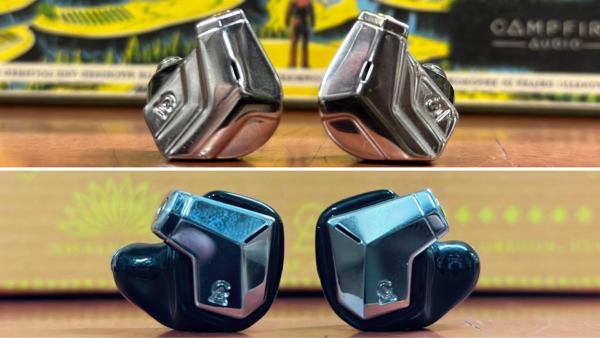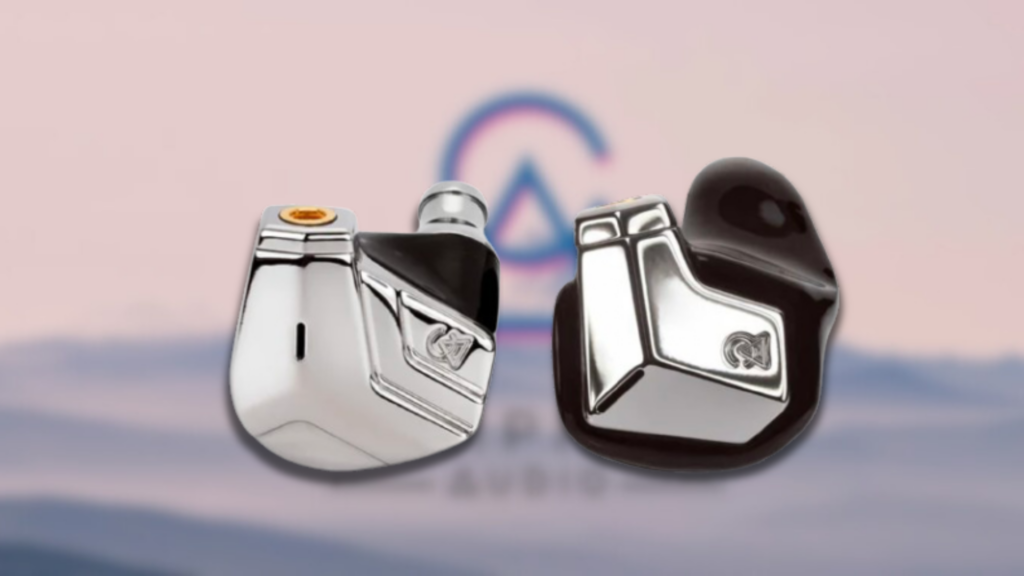Campfire Audio has a plethora of IEMs that covers a lot of ground in the tech world. You’ll see their Ponderosa come in with balanced armatures, or the Cascara with a dynamic driver. In terms of planar magnetic, the Supermoon has checked that style off of the list. Recently, they’ve released another model called the Astrolith, which comes with a dual planar magnetic driver. It was the natural choice to compare it to the Supermoon; the similar technology makes me curious to see what makes them different. How do the dual planar drivers compare to the singular planar driver? I compared the details of both side-by-side to find out.
What Comes In The Box
| Astrolith – $2,199 | Supermoon – $1,299 |
Astrolith IEMs
Time Stream Metal Cables
Hand-Crafted Premium Leather Case Small Split Mesh Drawstring Bag Large Crossbody Mesh Zipper bag Microfibre cloth & Cleaning tool CA Lapel Pin |
Supermoon IEMs
Time Stream Metal Cables
Hand-Crafted Premium Leather Case Dual-Pocket Breeze Bag
Microfibre cloth & Cleaning tool CA Lapel Pin |

Aesthetics and Functionality
While accessories and technology share some similarities, the aesthetics and design of these products show stark differences. Functionality remains the same with both IEMs, with the simple setup of wire into the audio device to start listening. As you read further, you’ll see that the Supermoon has a bit higher impedance, so it requires a little more power to drive it. I paired both with the portable DAC/Amp FiiO KA11 to level the playing field.
Both have the same in-ear wear style, but the fit type varies. The Astrolith is significantly lighter than the Supermoon, despite it having two drivers inside as opposed to one. It fits comfortably in the ear, and goes flush against the head in most designs. Supermoon is designed to fit snugly in the ear, with a unique shape that is rounded to perfectly align to most ear canals. The Supermoon carries a lot more weight, and it makes it seem like it should be the pricier IEM.
My own personal bias sides with the Astrolith. I am not a fan of bulky IEMs that have too much weight and stick out from your ear. I struggle using some Campfire Audio products because of that discomfort. The Supermoon was easy to wear and was secure throughout testing; however, the minimalist design and lightweight quality of the Astrolith is my preferred choice.
Tech Specs
| Astrolith | Supermoon |
| Frequency Response: 5Hz – 20kHz
SPL: 94 dB @ 1kHz Impedance: 7.05 Ω @ 1 kHz <0.5% THD Dual Planar Magnetic Drivers
|
Frequency Response: 5Hz–20 kHz
SPL: 94 dB @ 1 kHz: 54 mVrms Impedance: 15.5 Ω @ 1 kHz <1% THD Singular Planar Magnetic Driver
|
The technology here is something to note. The Supermoon was Campfire Audio’s first step into the planar magnetic driver game, and it received amazing feedback. Now, the Astrolith takes that tech one step further. They’ve introduced an additional planar driver that is smaller and is encased in a particle phase resonator tuning chamber. This delivers a crystal clear high end and allows the other main driver to focus on the subs and mids.
The Supermoon does have the 14mm planar driver, and it performs well. Campfire took the great technology they produced in Supermoon and took a step further in the Astrolith, making it the next step up for people looking to potentially upgrade.

Listening Review
Soundstage
The soundstage on these are very similar, but showed a few differences. They produced a wide soundstage that wrapped around the head. The frequency ranges were clear and detailed, and they had brilliant height and depth. I listened to a lot of classical music on each set of IEMs to get a feel for the soundstage and imaging accuracy. I would say the Astrolith erred on the narrower side in comparison with the Supermoon. This came with slightly less accurate imaging, and the Supermoon was more detailed in this area. Orchestra ensembles were easy to picture and individual instrumentalists could be pinpointed while wearing both IEMs. The most notable contrasts come in the frequency responses.
Low Frequencies
Low end is always strong in a pair of IEMs. The in-ear design allows for some noise cancellation to take effect, since the monitor goes completely in your ear and blocks your ear canal. There is a natural low tone that you get from the ambient noise around you being suddenly cut. Even with this low tone, the bass in both IEMs comes through clearly and doesn’t get lost or washed out. Basslines, low strings, and kick drums pack a punch and resonate well to make a foundation for other frequencies to build on top of.
Mid-Range Frequencies
The mid-range gets a lot of detail, most notably in the vocals. There is excellent clarity in both pairs of IEMs for a variety of ranges and genres. I like the textural detail the Astrolith provides; it’s clear there is a sharper response that comes from the driver only focusing on two ranges instead of all three. The Supermoon also creates a nice spread of textures and timbres in this range. Nothing gets lost or hidden behind another instrument, and I really enjoy the clarity across both IEMs.
High Frequencies
The big test between these two headphones was in the high end response. The additional tweeter added into the Astrolith makes it clear that the stark difference between these two IEMs should be the high end response. Even the tech specs show a higher frequency cutoff by 5kHz in the Astrolith than the Supermoon. The question is: did the Astrolith deliver? Answer: yes.
The difference isn’t as stark as you’d think. Yes, the Astrolith does have notably more vibrant highs and deliver more clarity in that top range. Still, the Supermoon delivered a colorful and pleasant high end that wasn’t left out of the picture. There is a good balance between the low and high in the Supermoon. In the Astrolith, there is just a touch of added flare that makes the high end stand out a little more than you’d think. It’s a smart move from Campfire; paying attention to the high end in a pair of IEMs allows for a colorful and more characteristic sound signature.

Summary
So which one is the better buy? Does the finely-tuned high end really warrant a big price jump? I really love the upgrades Campfire has made to their design with the Astrolith. It’s more comfortable in my ear and the soundstage has a little more character that makes tracks more entertaining. Don’t get me wrong: Supermoon is a great set of IEMs and has a lot to offer. As Campfire’s first planar magnetic IEMs, they’re a great addition to any audiophile collection. The Astrolith pulls ahead by just a hair in quality and style on my personal scale.
I highly suggest trying them for yourself and seeing the difference with your favorite tracks. Your personal preferences may differ from mine, and you’ll be able to make your own comparison. You can demo these IEMs and more at Audio46
The Astrolith and Supermoon are both currently available at Audio46.

